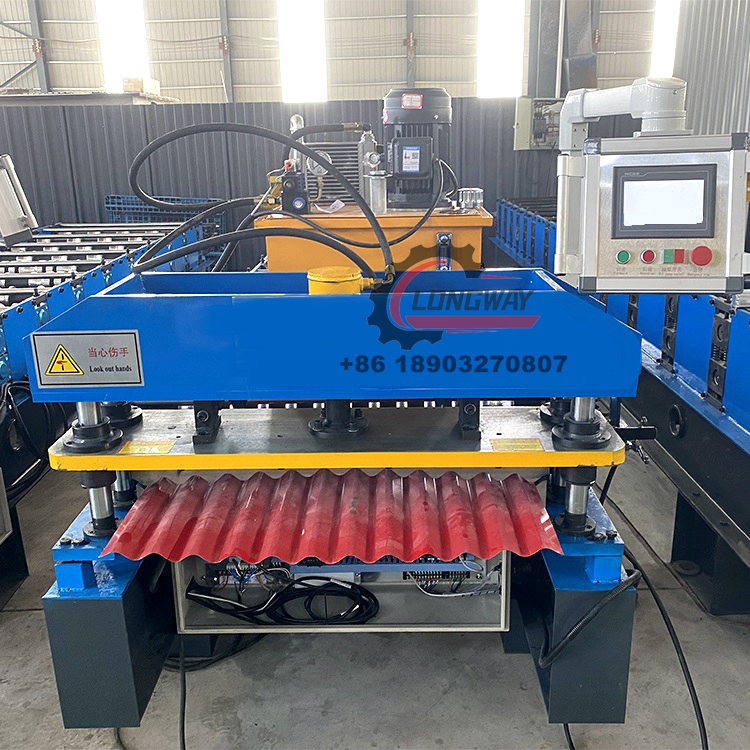trapezoidal sheet roll forming machine
Trapezoidal Sheet Roll Forming Machine An Overview
In the realm of modern manufacturing, sheet metal processing plays a crucial role in various industries, including construction, automotive, and appliances. Among the different techniques employed in this sector, the trapezoidal sheet roll forming machine stands out for its efficiency and precision in producing trapezoidal sheets, which are widely used in roofing and cladding applications.
What is a Trapezoidal Sheet Roll Forming Machine?
A trapezoidal sheet roll forming machine is specialized equipment designed to transform flat metal sheets into trapezoidal profiles through a continuous forming process. This machine takes coils of metal, typically galvanized steel or aluminum, and shapes them into desired profiles by passing them through a series of rollers, each gradually bending the metal until it reaches the final desired cross-sectional shape.
The trapezoidal shape is characterized by two parallel sides of differing lengths and two non-parallel sides, making it ideal for roofing panels. The design aids in water runoff, prevents the accumulation of snow, and enhances the aesthetic appearance of buildings. Due to these benefits, trapezoidal sheets have become increasingly popular in modern architectural designs.
Key Components of the Machine
1. Uncoiler The initial stage of the process involves the uncoiler, which unwinds the metal coil and feeds it into the machine. This component is designed to handle coils of varying sizes and weights, ensuring a seamless feed into the roll-forming system.
2. Rollers The heart of the trapezoidal sheet roll forming machine consists of a series of rollers that are meticulously crafted to create the trapezoidal profile. Each roller plays a crucial role in gradually bending the metal into the specified shape. The alignment and pressure of these rollers can be adjusted to accommodate different thicknesses and material types.
3. Cutting Mechanism Once the sheet has been formed, it moves to the cutting station. Equipped with either a mechanical or hydraulic cutting system, this mechanism ensures precise cutting of the sheets to the required lengths. This feature is essential for meeting the specific needs of a project and maintaining consistent quality.
4. Control System Modern trapezoidal sheet roll forming machines are equipped with advanced control systems that allow for precise monitoring and adjustments during the forming process. Operators can set parameters such as speed, length, and shape, thus ensuring high efficiency and reducing wastage.
trapezoidal sheet roll forming machine

Advantages of Trapezoidal Sheet Roll Forming Machines
The implementation of trapezoidal sheet roll forming technology offers several advantages
- Efficiency The continuous production process minimizes downtime and maximizes output. Once set up, a roll forming machine can produce large quantities of sheets at high speeds with minimal labor intervention.
- Precision With specialized rollers and advanced cutting mechanisms, machines provide high levels of accuracy in shaping and sizing sheets. This consistency is crucial for ensuring that parts fit together correctly during installation.
- Material Utilization The process generates minimal waste, which is a significant advantage in controlling production costs. Roll forming can utilize materials more efficiently than traditional cutting methods.
- Durability and Strength Trapezoidal sheets produced through this process boast enhanced structural integrity, making them suitable for a variety of applications where strength is a requirement.
Applications
Trapezoidal sheets have numerous applications, particularly in the construction industry. They are commonly used for roofing, wall cladding, and in the production of prefabricated structures. Their lightweight yet strong properties make them ideal for use in industrial buildings, warehouses, and agricultural structures.
In conclusion, the trapezoidal sheet roll forming machine represents a pivotal development in the metal processing industry. Its ability to produce high-quality, precise metal sheets efficiently is invaluable to manufacturers seeking to meet the demands of a fast-paced market. As technology continues to advance, we can expect further innovations in roll forming machinery, enhancing capabilities and broadening applications across various sectors.
-
Roof Panel Machines: Buying Guide, Types, and PricingNewsJul.04, 2025
-
Purlin Machines: Types, Features, and Pricing GuideNewsJul.04, 2025
-
Metal Embossing Machines: Types, Applications, and Buying GuideNewsJul.04, 2025
-
Gutter Machines: Features, Types, and Cost BreakdownNewsJul.04, 2025
-
Cut to Length Line: Overview, Equipment, and Buying GuideNewsJul.04, 2025
-
Auto Stacker: Features, Applications, and Cost BreakdownNewsJul.04, 2025
-
Top Drywall Profile Machine Models for SaleNewsJun.05, 2025








